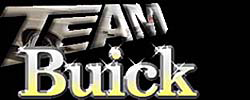On the '51 Henry J we got away with .020" of V-P clearance all last & this season. The good thing is that the piston is moving AWAY from the valve. This happens in our engine at about 5* ATDC. The exhaust has plenty of clearance. When you advance the cam it makes the clearances even tighter. We have the J's at 4* advanced. If we retarded it to say "Straight" up we would have MORE clearance on the intake & less on the exhaust.
Tom Telesco
Classic and Muscle Automotive
12 Cook St.
Norwalk, CT 06853-1601
Day Phone 203-324-6045 ET
NailHead Mini-Starters '53-'66
Adjustable Roller Tip Rocker Arms - All NailHeads
Custom forged pistons
Front & rear neoprene seals
Many other "Nail" parts
"If I can't get it, you don't need it!"








Bookmarks